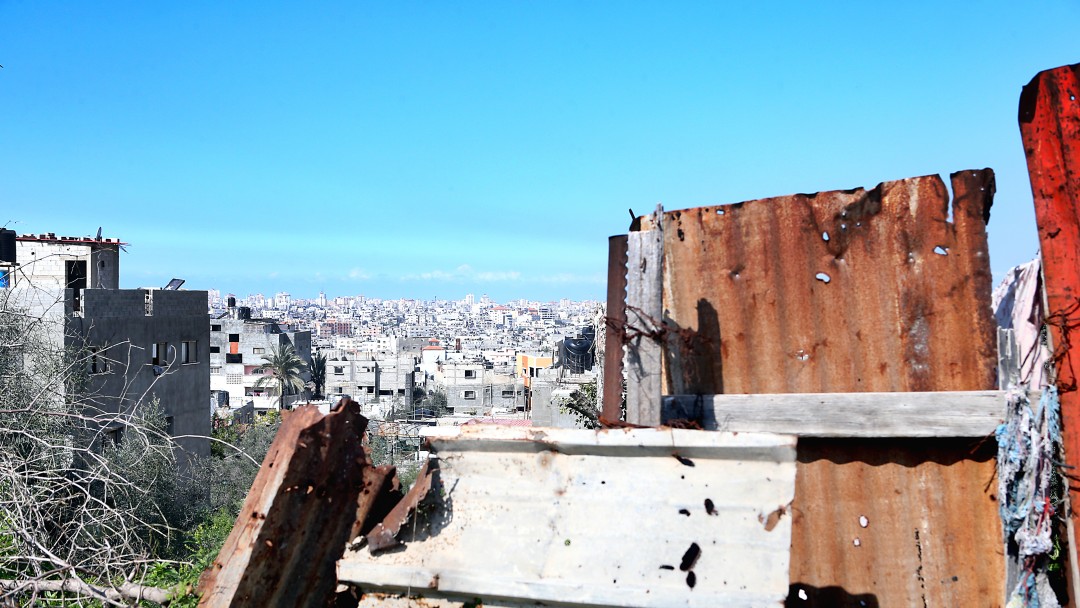News from 2016-03-29 / KfW Development Bank
Projects in the Gaza Strip deliver long-term impact
Even ten years on, facilities funded by KfW are still being used by Palestinians.
Winners despite the crisis: the youth team of a football school in the Gaza Strip has already celebrated many victories. Numerous trophies in the display cases of the clubhouse bear witness to this. The building is one of no fewer than 72 social facilities in the Gaza Strip to have been financed via KfW Development Bank as part of an infrastructure programme that ran from 2003 to 2006 and was aimed at alleviating poverty. Jobs were created and income generated through the construction of the clubhouse. During a visit to the Gaza Strip in late 2015, KfW's Independent Evaluation Department was able to confirm that the buildings financed a decade earlier or more are still in good condition and being used.
These include not only sports amenities, but also schools, community and cultural centres, a museum, the University of Gaza and a nursery school that together received EUR 10 million in funding from KfW on behalf of the Federal Ministry for Economic Cooperation and Development (BMZ). 61 of the 72 institutions and facilities are still operating a decade later, six were destroyed in recent conflicts and the remainder have been put to different use. Nonetheless, during their mission the KfW experts found that an impressive 85 % of the buildings are still in good or very good condition. "Due to the military conflicts we had to wait ten years to carry out the evaluation - an interesting opportunity for us to study the long-term effects," explained KfW Project Manager Christian Schönhofen from the development bank's Evaluation Department.
Constructing communal facilities creates jobs
Under the UN Development Programme, unemployed residents of the Gaza Strip were hired to build the facilities. With KfW's help, a total of 203,000 days of employment were generated in this way, making an important contribution to improving living standards in the almost completely isolated Gaza Strip. This area's 45 % unemployment rate is far higher than that of the other Palestinian Territories. 39 % of inhabitants are living below the poverty line. Since the borders were closed it has been a costly business to bring construction materials into the region. This was one of the reasons why, where possible, local material was used to build the facilities.
"When the people in the Gaza Strip have an income, that also provides social cohesion," explained Thomas Herzberg, who conducted the evaluation and was there in person to check on the current state of the infrastructure. After the building work was completed, no permanent jobs had been created but some of the labour force had gained the practical experience to apply successfully to participate in other projects. The residents of the Gaza Strip have identified ways of maintaining their facilities themselves over the long term. For example, a nursery school financed itself by selling baked goods. Volunteers operated community centres. And with the aid of donations, some buildings were even renovated or expanded.
Affording prospects, preventing escalation
The evaluators are convinced that employment, income and social cohesion have the ability to mitigate conflict. It is obvious that improved living conditions can contribute to political stability. "People again see a future for themselves and it becomes harder for extremist groupings to recruit them," is the conclusion Herzberg draws. Of course, this will not resolve the conflict in the Middle East, but that was not the aim of the project. The programme in the Gaza Strip was assessed as "good" in the evaluation carried out after ten years and thus ranked above the average for similar projects intended to promote employment and, indeed, all other projects in the region.


Share page
To share the content of this page with your network, click on one of the icons below.
Note on data protection: When you share content, your personal data is transferred to the selected network.
Data protection
Alternatively, you can also copy the short link: https://www.kfw-entwicklungsbank.de/s/enzBWrMC.BUPA
Copy link Link copied